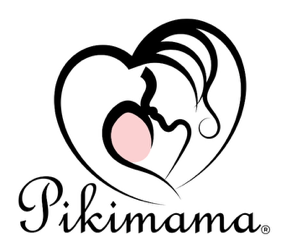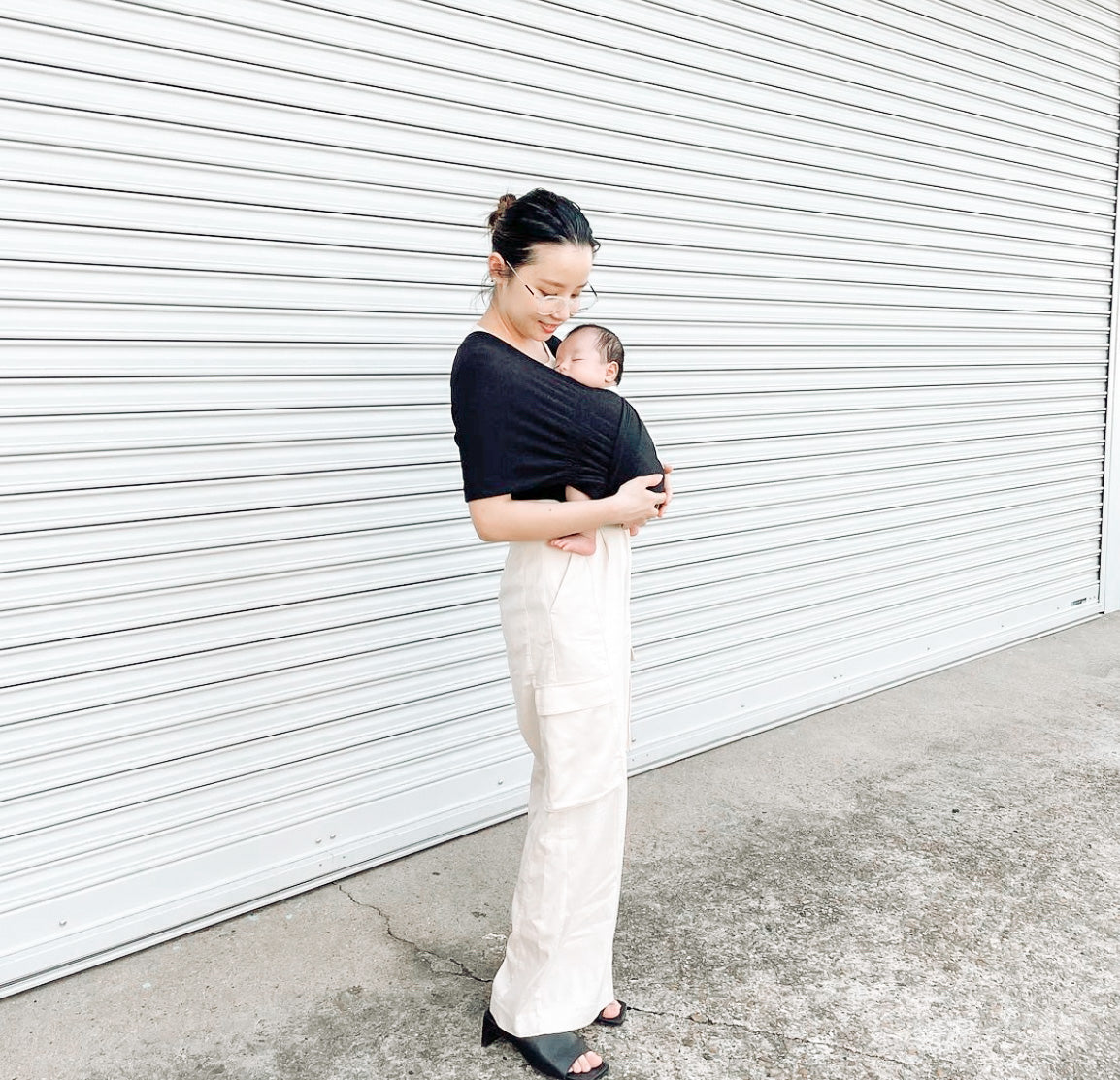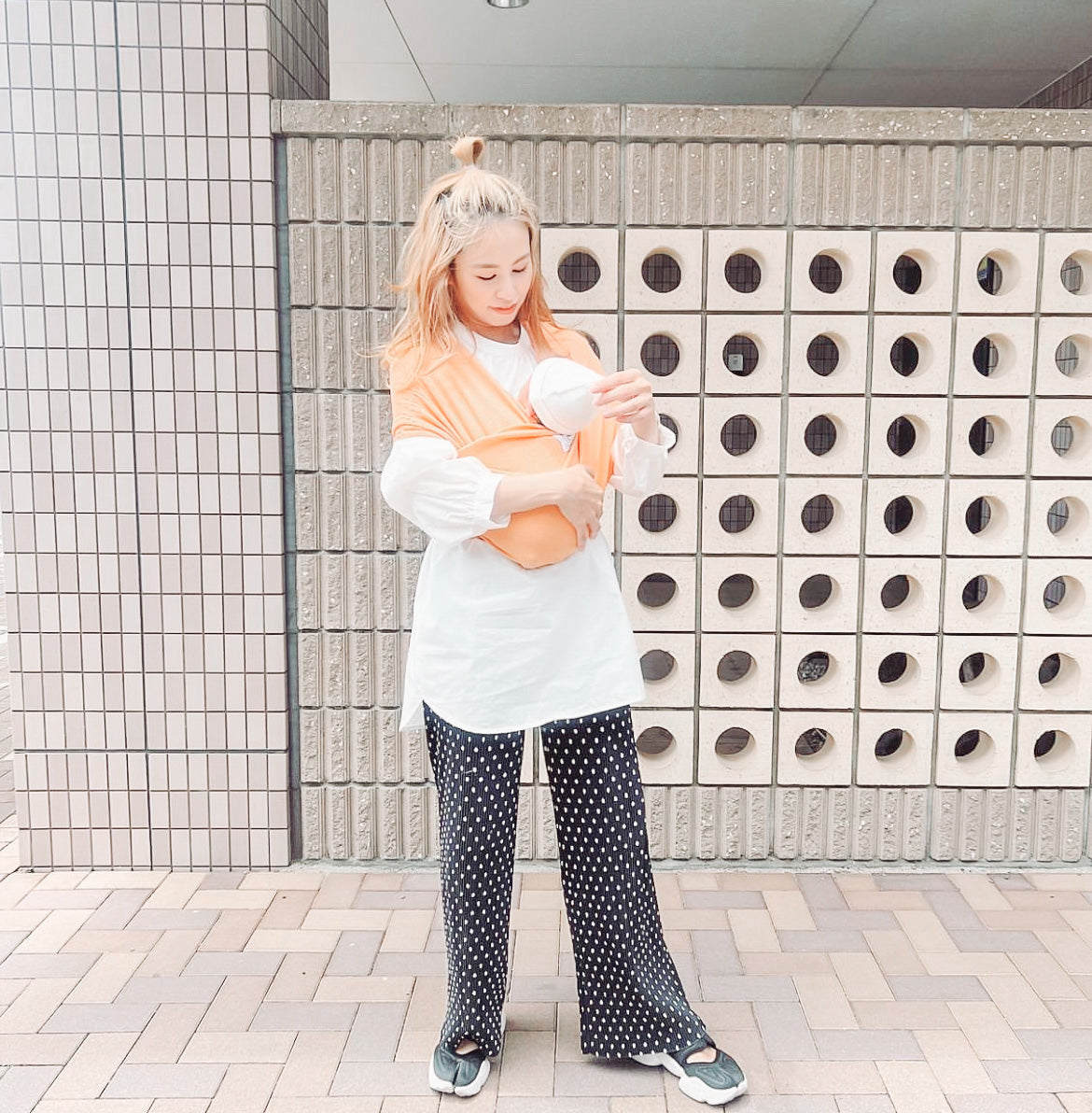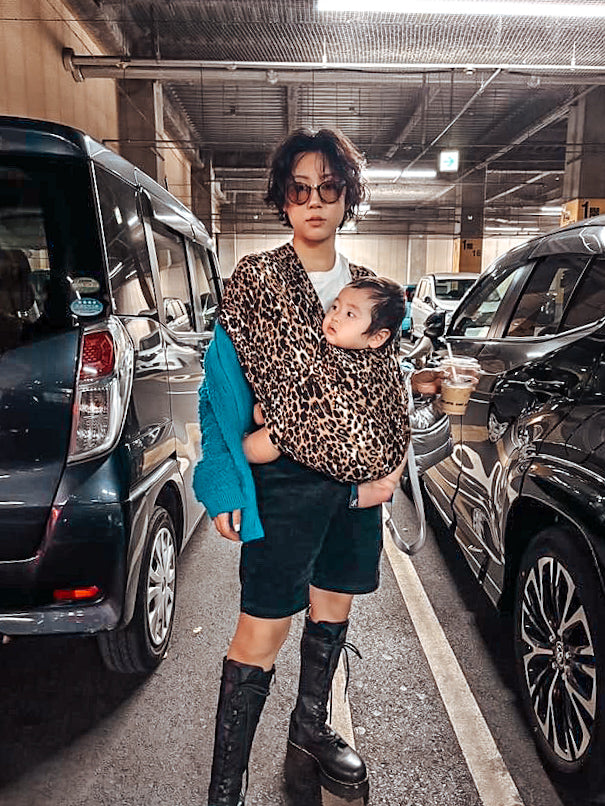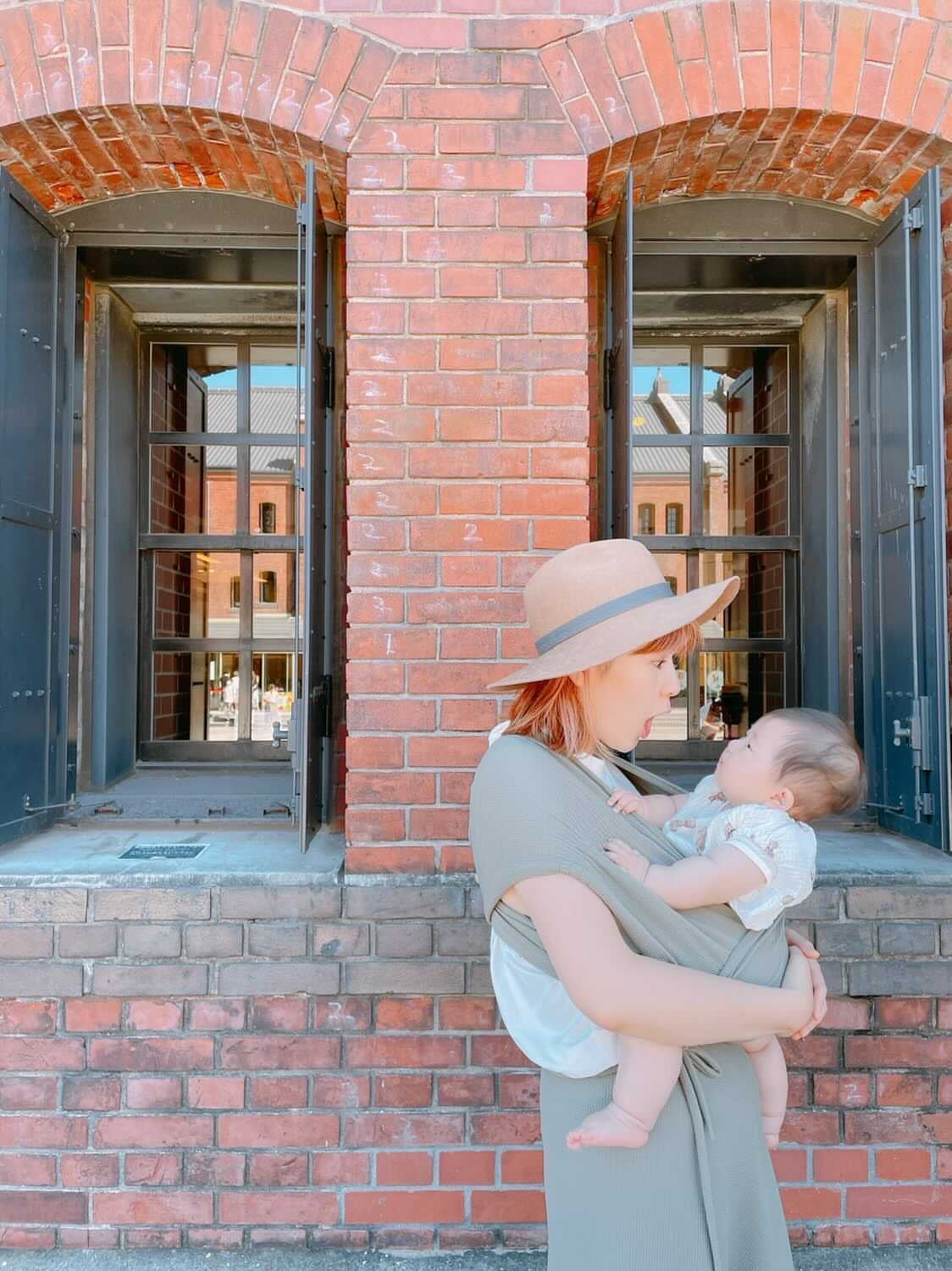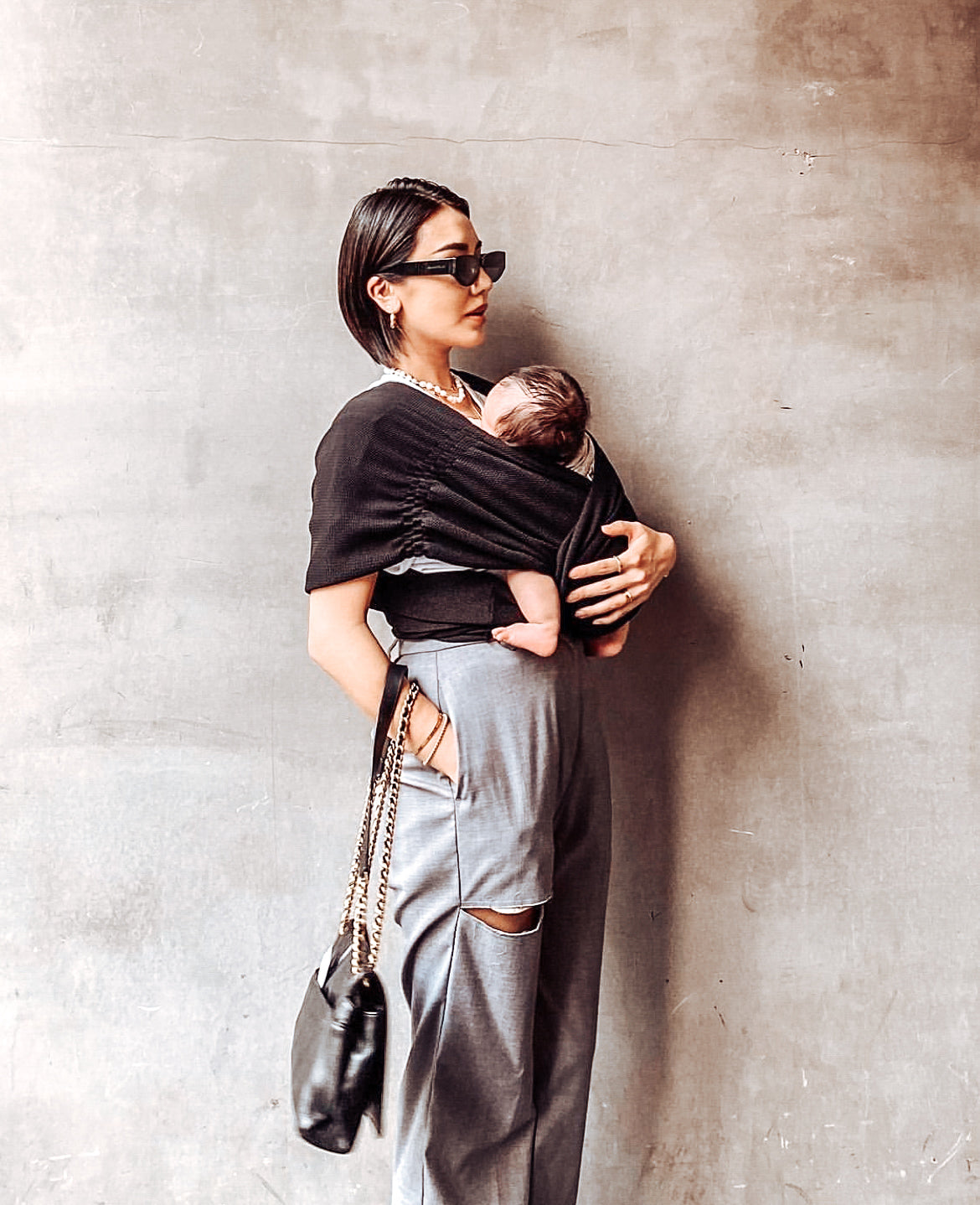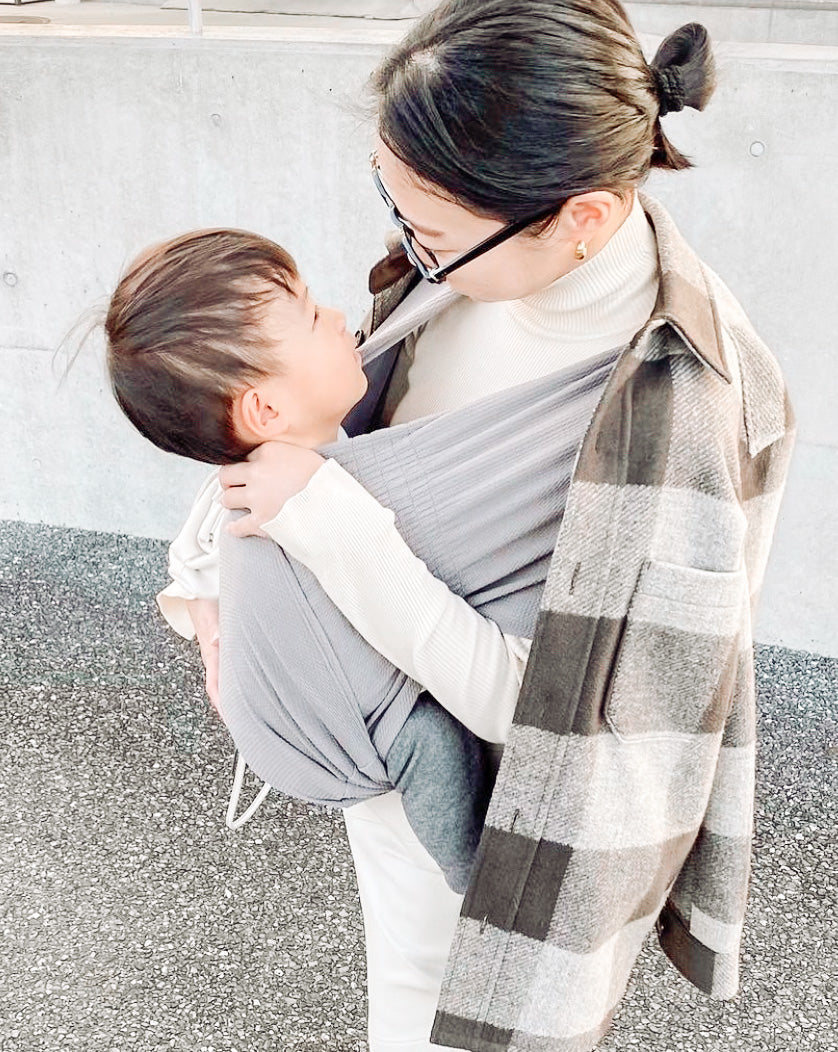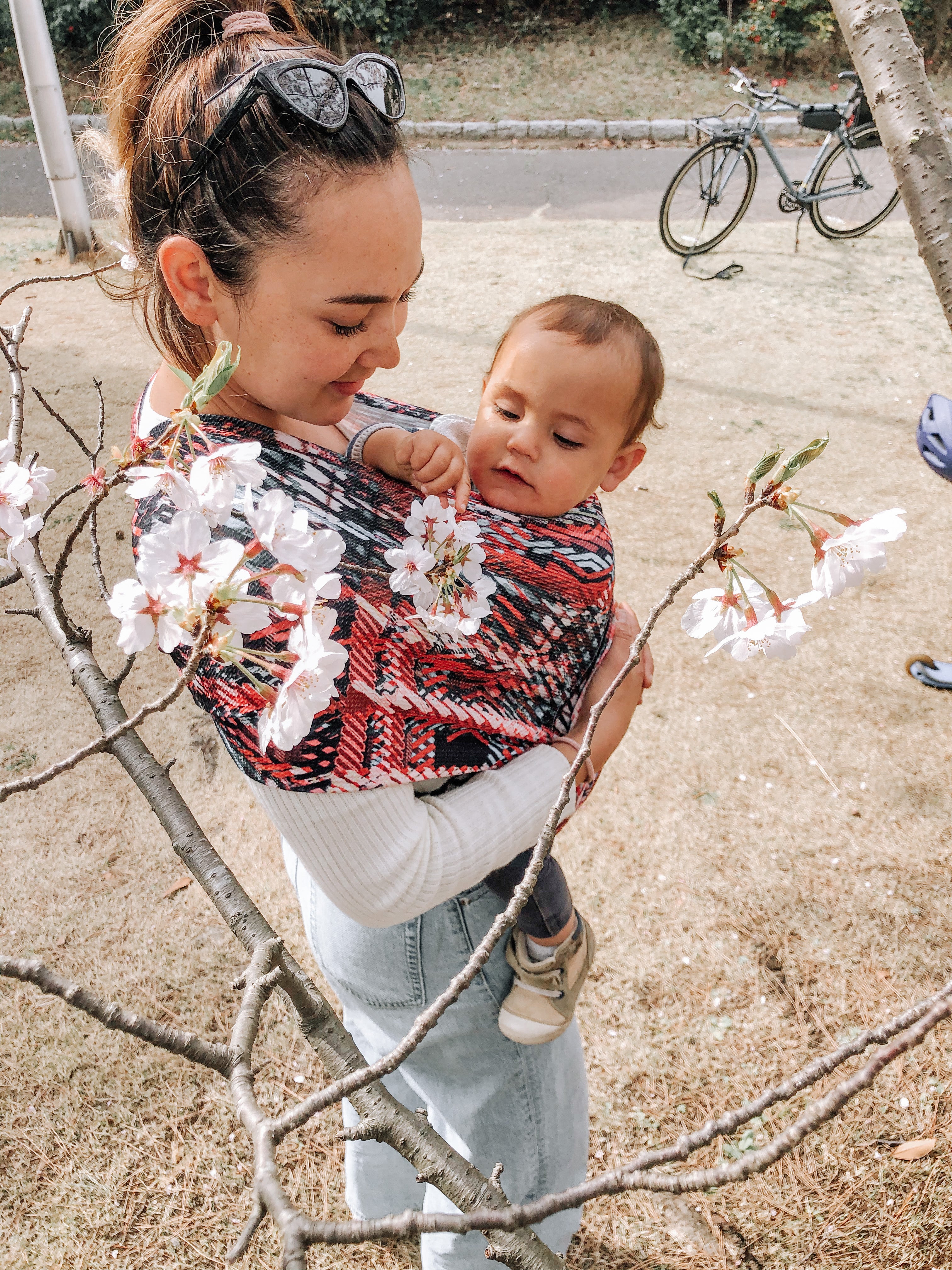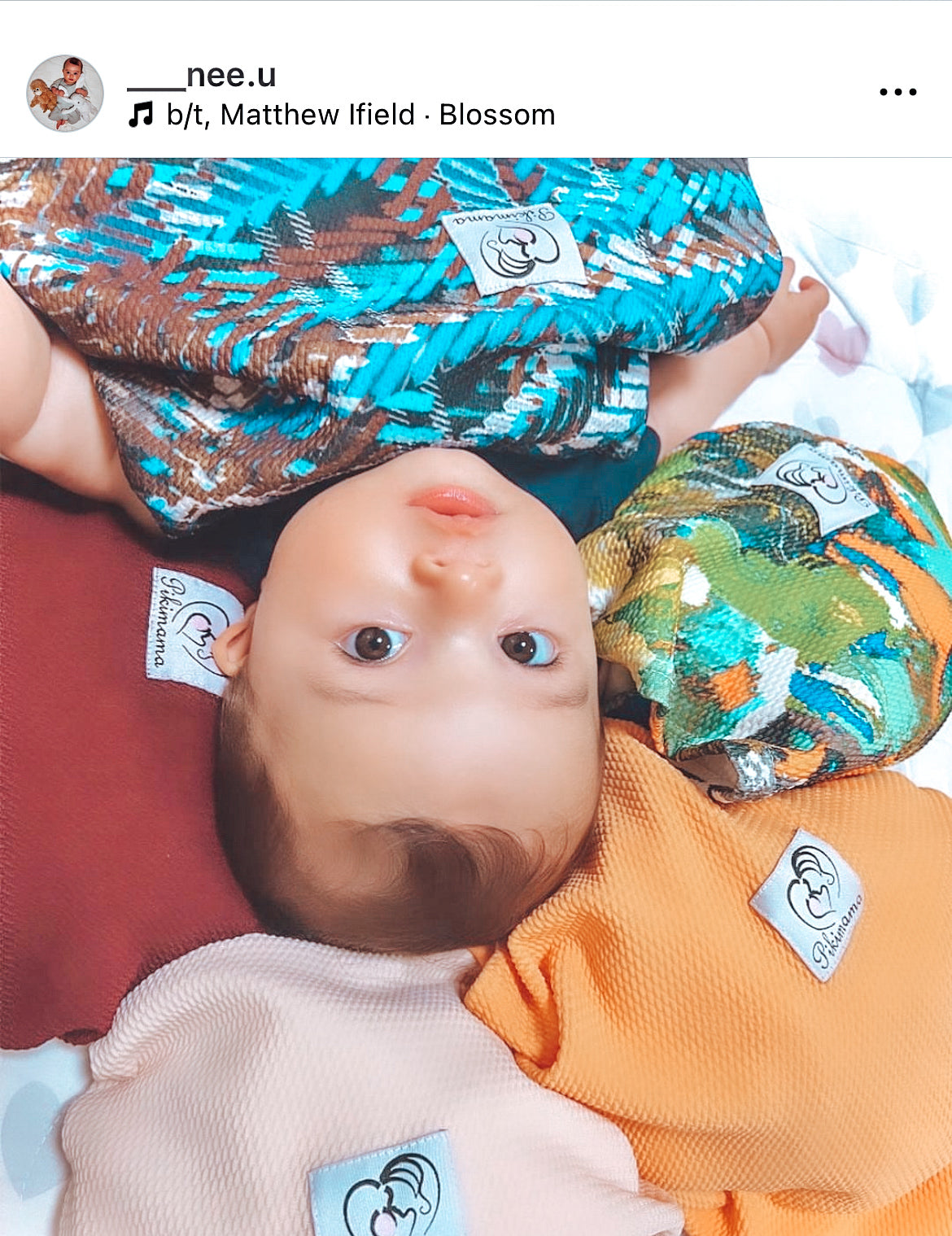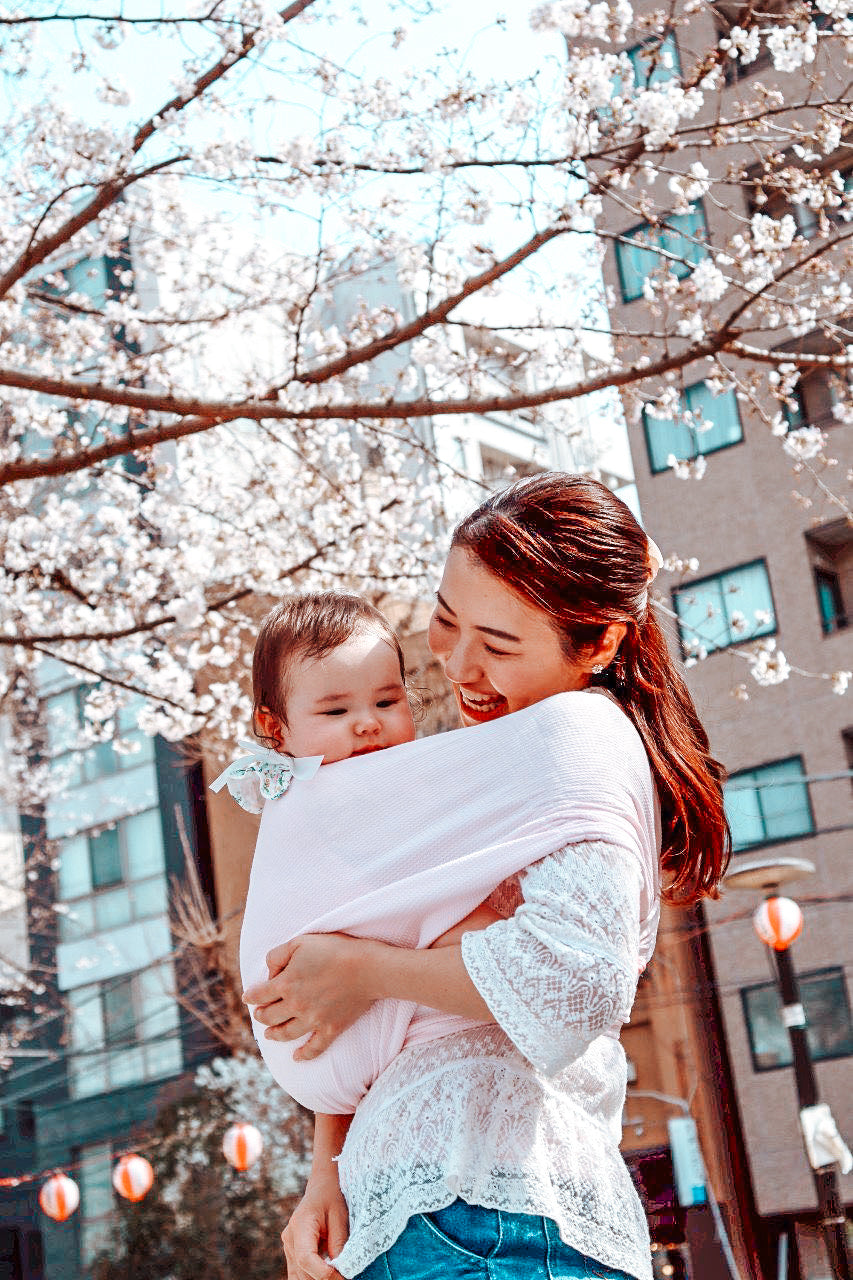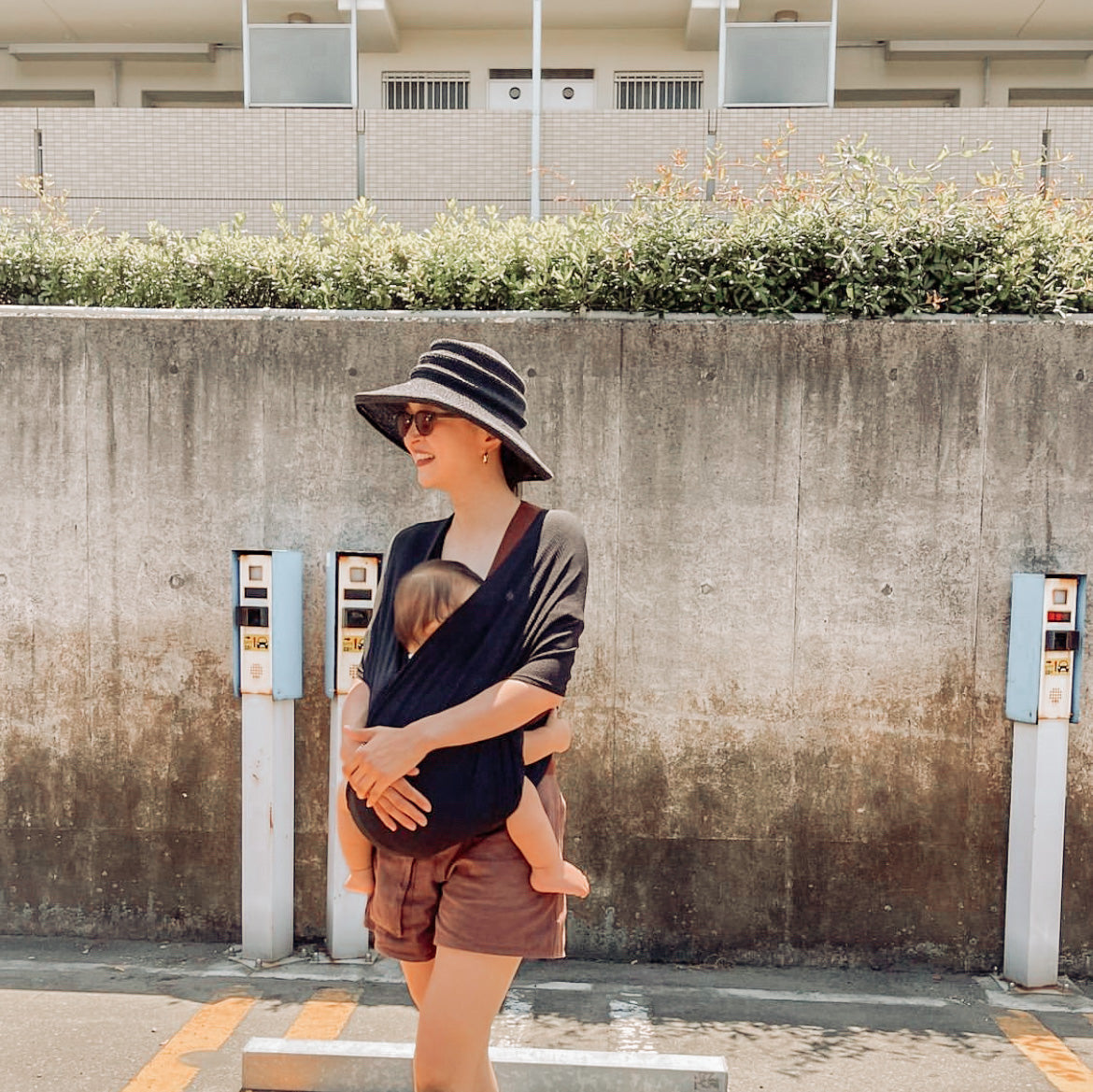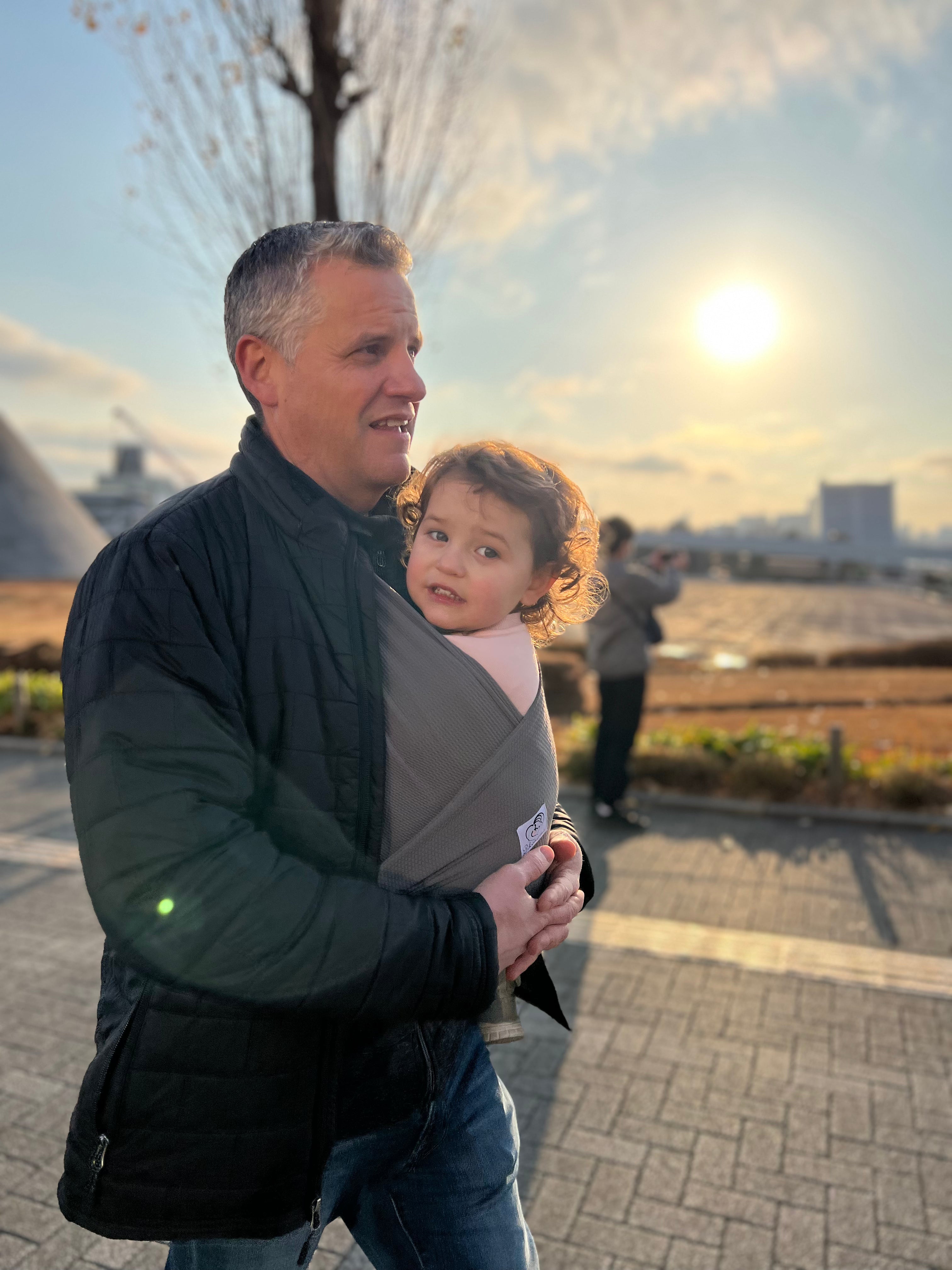Baby Wearing Parenting
Have you ever heard people say
"Don't hold the baby too much or else the baby will grow up selfish"
"It's better to let your baby cry themself so don't hold them right away"

That has been a common advice mother's received not that long ago.
However, today we know that to not be true.
Babywearing has many benefits for the baby and parents!

Dr. Sears, a professor of pediatrics at Harvard University and the cover story of The Times (USA), lists the following five advantages
1. sling babies cry less
Many parents say, "As long as I carry my baby, he/she is in a good mood. But is this true?
In 1986, scientists in Canada conducted an experiment with 99 mothers and their babies.
Give half the moms a sling and carry them for at least three hours a day. Hold her as long as you can, not just when she cries. I told them to carry him all the time as much as possible, not just when he cries.
The other half of the group was given no explanation about cuddling.
After six weeks, 43% of the mothers in the group instructed to carry their babies testified that their babies cried less.
In another case, an anthropologist who travels the world studying newborn behavior said that babies in cultures that carry their babies do not cry as much as those in Western countries. In Western countries, babies are supposed to cry, and they think of crying time in terms of fat hours, but in countries where babies are carried daily, they think of crying in terms of minutes, and in those countries, babies are usually carried by someone except when they are sleeping.
2. sling babies learn more
When babies are in a good mood and cry less, they have more 'zone time' and more time to learn. Zone time is a time when babies can calmly engage with and accept their surroundings.
This time is the most optimal learning time for babies. Researchers say that babies who are swaddled have more active visual and auditory senses.
When babies are in "zone time," this is the time to interact with their parents.
They can interact with each other in a calm and relaxed manner.
The position and orientation of the parent and baby's face to face when holding the baby is also ideal.
The human face viewed from this distance provides a powerful stimulus for bonding.
In a kangaroo carry, the baby has 180-degree vision and can scan his or her surroundings.
In doing so, they learn which of the information they see they can take in and which they can eliminate. This choice of information to take in is what activates learning, and babies who spend their daily lives in the arms of busy mothers have so much information to take in that their brains are inevitably stimulated to the point of being fully stimulated. 
3. Sling babies are more organized
The benefits of carrying babies are easy to understand if you think of the gestation period as 18 months. The environment in the womb is a place dedicated to the baby's development.
With birth, the baby is removed from that comfortable environment. It is said that stretching the in utero environment to help the baby become accustomed to the outside world makes it easier for the baby to integrate into the outside world.
Carrying the baby similarly to when it was in the womb helps balance the security of the outside world with that of the womb. For example, the speed and tempo of the mother's walk, the sound of her heartbeat, the sound of her breathing, and other rhythms that the baby grew up feeling for nine months in the mother's womb can be felt outside and can calm the mind.

A baby who is lying on the floor or in bed all the time is in a state of intense fluctuation from the womb to the outside world and adapting to that environment,
Newborns may develop disruptive behavior patterns such as colicky crying, jerky movements, disruptive self rocking, anxious thumb sucking, erratic breathing, and sleep disturbances. Infants who are forced to self-soothe waste valuable energy that could be used for growth and development.
4. The "humanizing" benefits of babywearing
Babies are always involved in the world of the person carrying them. They see, hear, and sense the same things that mom and dad do. Babies who are carried are learning their parent's facial expressions, smells, walking rhythms, body language edges, changes in tone of voice, and more.
At the same time that the baby is remembering the parent's behavior, the parent is watching the baby's behavior all the way under the nose, making it easier to read signals from the baby. Parenting in close proximity increases their interaction with each other and provides more opportunities to learn about human nature. For example, holding a baby while washing dishes allows the baby to experience the same world as an adult by hearing the sound of running water, feeling the splash, and smelling the detergent.
5. sling babies are smarter
Environmental experiences stimulate nerve branching and connections to other nerves, which promotes brain growth and development. Babies who are learning through mom and dad's world are learning by incorporating information and routines properly selected by their parents, so through swaddling, the baby's nerves can connect with the right nerves. A baby who is constantly learning through cuddling is also more likely to learn behavior patterns and other things.
It is said that babies who are swaddled learn language faster because they are often listening to their parents' conversations, etc., and have more opportunities to watch the mouth movements of adults up close. Because they can hear words clearly at close range, they are good listeners. They also learn to listen carefully.
Some of the sounds of the open air can be frightening for a baby to experience alone, but by listening to them in the safety of their mother's arms, they learn that these sounds are safe.
.
August 29, 2013 July 14, 2022 Dr. Bill Sears
{Article}
And...
It is said that not only does swaddling increase a baby's brain stimulation and language skills, but it also builds attachment formation that strengthens the bond between parent and child. In addition, a study conducted by St. Luke's Hospital in Japan found that more mothers felt their babies were loved when carried in a cloth sling than in a buckle-type baby carrier.
In addition, a study conducted by St. Luke's Hospital in Japan found that more mothers felt their babies were loved when carried in a cloth sling than in a buckle-type baby carrier.
One of the reasons for this may have to do with the less physical burden on the mothers when carrying their babies. Pikimama believes that this is the case.
For example,
Pikimama's sling can be carried high and does not put pressure on the stomach area,It can also be used by mothers who have a cesarean section. A mother's body after childbirth is wobbly... The internal organs return to their proper position,
A mother's body after childbirth is wobbly... The internal organs return to their proper position,
The position of the baby in the carrier is very important until the organs return to their proper position and the muscles can provide adequate support.
 The Pikimama Sling does not put pressure on the lower abdomen and is less stressful on the body.
The Pikimama Sling does not put pressure on the lower abdomen and is less stressful on the body.
The Pikimama Sling has a structure that prevents lower abdominal drop and uterine prolapse.
Many people do not find it painful to carry their babies for long hours in a cloth sling that also reduces the burden on the shoulders and back. More than 80% of mothers and fathers who use the pikimama sling say that it reduces stiff shoulders and back pain.
Lifelong bonding with baby
The baby's physical and mental development
Confidence as a parent
All of these things can be achieved with the pikimama sling, which is made of fabric and is easy to carry.
Why don't you try to bring up your baby in a less burdensome cloth sling?
Pikimama
Usage scenarios
Pikimamaの愛着抱っこ育児動画
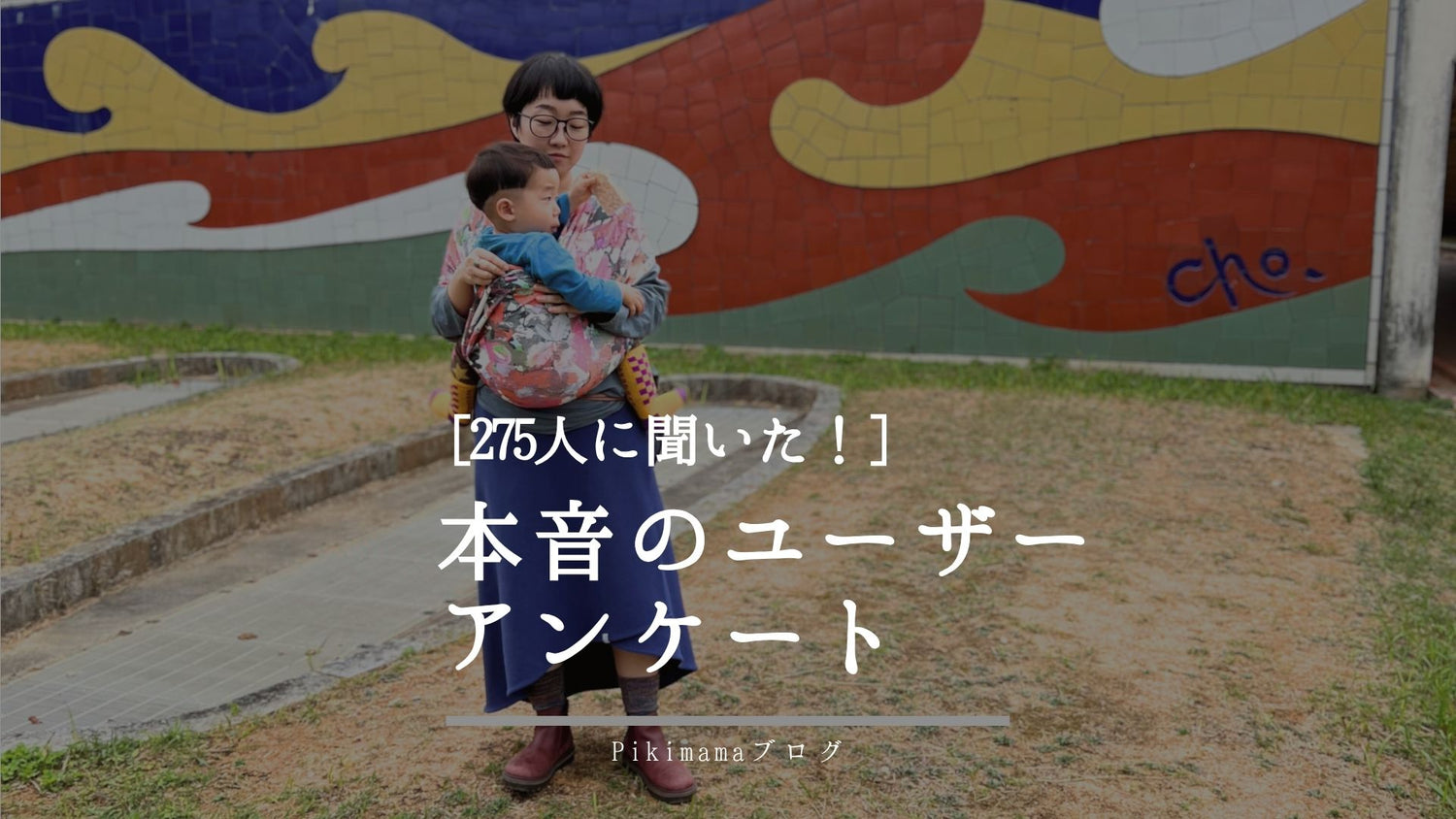
Pikimamaスリング利用者アンケートまとめ
Pikimama(ピキママ)スリングをご購入いただいたお客様からのアンケート結果をまとめました!いつもご愛顧いただきありがとうございます♡
購入を検討している方へのメッセージ
ご購入いただいたお客様から、アンケートを通してこれから購入を検討している方へのメッセージをいただきました♡
ピキママ最高でした♡モカMサイズ購入。使用してから1ヶ月ちょっとです。密着抱っこが好きなので、届いた時は少し大きいかな?と思いましたが、大きめだから主人と兼用することができました(笑)ということで、結果オーライっ!! 一枚布のベビーラップを2枚持っているので、ピキママ購入悩んでいましたが、楽に装着できるところに惹かれて思い切って購入!やっぱり楽でした♡ 『ベビーラップ持ってるからなぁ』と悩んでいる方の背中を押せたらと思いレビューしてます(^^) ピキママいいですよ♪ベビーラップ使用者で、その密着が好きな方はサイズ小さい方がいいのかも??ということで、本日Sサイズもポチりました(^^)♪届くのが楽しみです⭐︎
2ヶ月になる息子が6キロを超えて家での長時間抱っこが大変になってきたため購入しました。最初こそ装着に慣れるのに戸惑いましたが、回数を重ねるごとにコツを掴んで今ではすっかり慣れました。フィット感も最初はキツイな、大丈夫かな、と心配に感じましたが慣れた今ではちょうどいいです。息子もとても心地が良いようで、始めて使用した時からすぐにぐっすり寝てくれています。それまでは抱っこすると他に何も出来ないし、ご飯を食べるタイミングも難しい時がありましたが、ピキママスリングを使い始めてからは抱っこしながらご飯も食べられるし、メイクも出来るので本当に助かっています。人気ランキングの上位によく入っている抱っこ紐も持っていますが、そちらは家の中で付けるにはゴツいので使い分けています。ピキママスリングは装着したままソファなどに座っても背中や腰がゴワゴワしないので付けているママ自身も快適に過ごせます。最近は外出にもピキママスリングを使用することが増えてきています。みずたまを購入しましたが、色と柄が本当に可愛いので付けている時気分が上がります。夫も色違いで買おうかな、なんて言っています。
子供が自分で持ってきて脚上げて自分から入ろうとするぐらい気に入ってます😊
とてもいいです。4か月の子供が抱っこ好きすぎて、体力的にしんどかったのですが、こちらを購入して抱っこが辛くなくなりました。使い始めて3回目くらいには、子供の前でスリングをつけると、抱っこしてもらえるとわかり嬉しいようで、ご機嫌になります。素晴らしい商品をありがとうございます。
注文してから届くまでとても楽しみで、いつ届くかワクワクしていました。実際ピキママで抱っこしたところ、泣いてた我が子は安心したのかすぐに寝始めてびっくりしました。毎日愛用しております。沢山使います。ありがとうございます。
Pikimamaスリングをぜひお試しください♡
Pikimama(ピキママ)のスリングは、『ママの欲しい』から生まれたママのための、新生児から使える抱っこ紐。おしゃれなスタイルで抱っこしながら、ファッション感覚で着用できます。
